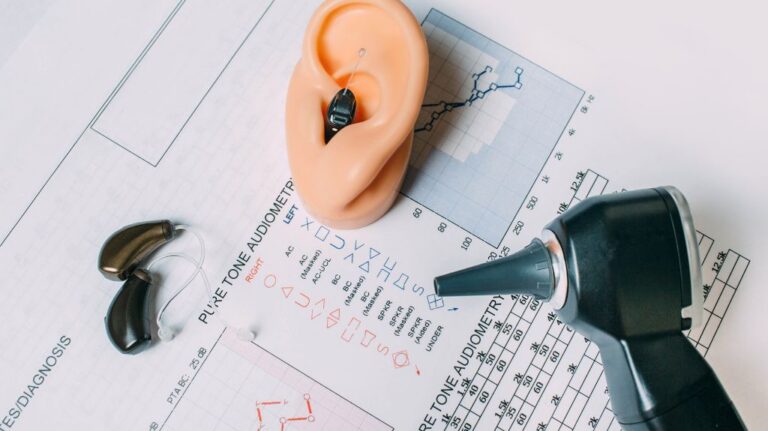VA Ratings and Erectile Dysfunction: What You Need to Know
When it comes to veterans’ healthcare, the Department of Veterans Affairs (VA) plays a crucial role in providing support and assistance. Many veterans may not be aware that VA benefits extend beyond traditional medical services. In recent years, there has been an increased recognition of the impact of service-related conditions, such as erectile dysfunction (ED), on veterans’ overall well-being. In this article, we will delve into the VA benefits available for veterans dealing with erectile dysfunction.
Recognizing the Connection with Service and ED
Erectile dysfunction is a medical condition characterized by the inability to achieve or sustain an erection sufficient for sexual activity. While ED is a common issue affecting men of various ages, it can be particularly challenging for veterans, as it may be linked to service-related conditions such as post-traumatic stress disorder (PTSD), traumatic brain injuries (TBI), or other physical injuries sustained during military service.

Service-Connected Disabilities for ED
To qualify for VA benefits related to erectile dysfunction, veterans must establish a service connection. This means demonstrating that the condition is directly linked to an event, injury, or illness that occurred during military service. For veterans struggling with ED, this could involve providing medical evidence that connects the condition to service-related factors.
Medical Documentation and Evaluation
The first step in seeking VA benefits for erectile dysfunction is to gather comprehensive medical documentation. This may include relevant medical records, statements from healthcare professionals, and any other evidence that supports the connection between military service and the development of ED. It’s crucial to be thorough in documenting the timeline of events leading to the onset of erectile dysfunction.
Upon submitting the necessary documentation, veterans will undergo a VA medical evaluation. This evaluation is designed to assess the severity of the condition and its impact on the individual’s daily life. It is essential for veterans to be honest and open during this process to ensure an accurate assessment of their condition.
Types of VA Benefits for Erectile Dysfunction
Once the service connection is established, veterans may be eligible for various types of VA benefits to address their erectile dysfunction. These benefits can include:
Disability Compensation:
- Veterans with service-connected erectile dysfunction may be eligible for disability compensation. The amount of compensation is determined based on the severity of the condition and its impact on the individual’s ability to work and perform daily activities.
Special Monthly Compensation (SMC):
- In some cases, veterans with severe erectile dysfunction may qualify for Special Monthly Compensation. SMC is an additional benefit provided to veterans with service-connected disabilities that are particularly severe or result in the need for additional assistance and care.
Access to Treatment and Medications:
- VA benefits for erectile dysfunction also include access to various treatment options and medications. Veterans may receive prescriptions for medications such as phosphodiesterase type 5 (PDE5) inhibitors, which are commonly used to treat ED. Additionally, counseling and therapy services may be available to address the psychological aspects of the condition.
Adaptive Devices:
- For veterans whose erectile dysfunction is a result of physical injuries, adaptive devices such as vacuum erection devices may be provided. These devices can assist in achieving and maintaining an erection, enhancing the overall quality of life for affected veterans.
Ratings Percentages for VA Erectile Dysfunction
- 0% Rating:
- No compensation is awarded.
- The condition may be present, but it does not cause significant impairment.
- 10% Rating:
- There is evidence of occasional inability to maintain an erection.
- The condition does not significantly affect daily functioning.
- 20% Rating:
- Erectile dysfunction is more frequent, impacting sexual activity.
- Occasional performance failures may occur.
- 30% Rating:
- Erectile dysfunction is present on a regular basis.
- The condition affects the veteran’s overall quality of life.
- Higher Ratings:
- For more severe cases of erectile dysfunction with additional complications, such as the need for medical devices or the inability to engage in sexual activity, higher ratings may be assigned.
Other Ratings Possibilities
If you’ve undergone surgery or experienced significant trauma to the pelvic area, you may be eligible for a disability rating under specific codes related to penile and erectile dysfunction issues.
Disabilities associated with the penis that may warrant a disability rating include:
- Code 7520 is applicable when there is a removal of at least fifty percent of the penis, resulting in a 30 percent disability rating for the affected individual.
- Code 7521 is relevant when a physician removes the penile glans, entitling qualifying individuals to a 20 percent disability rating.
- Code 7523 is applicable in cases of complete atrophy of the testes. To secure a 20 percent disability rating, the condition must involve both testes. However, if only one testis is affected, the individual will receive a 0 percent disability rating.
- Code 7524 is relevant when a physician removes the testes. A 30 percent disability rating is granted for the removal of both testes, while the removal of one testis results in a 0 percent disability rating.
In cases where one testis is removed due to a service-connected injury, and the individual lacks another testis or it is nonfunctioning due to causes unrelated to military service, the veteran is eligible for a 30 percent disability rating under code 7524.
If you need help with benefits for erectile dysfunction or have been denied benefits, get in touch with the professionals at VA Benefits Attorneys to see if there is a matching attorney who can assist you with your case.







